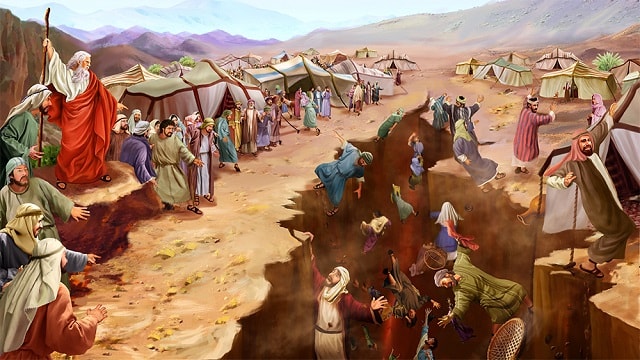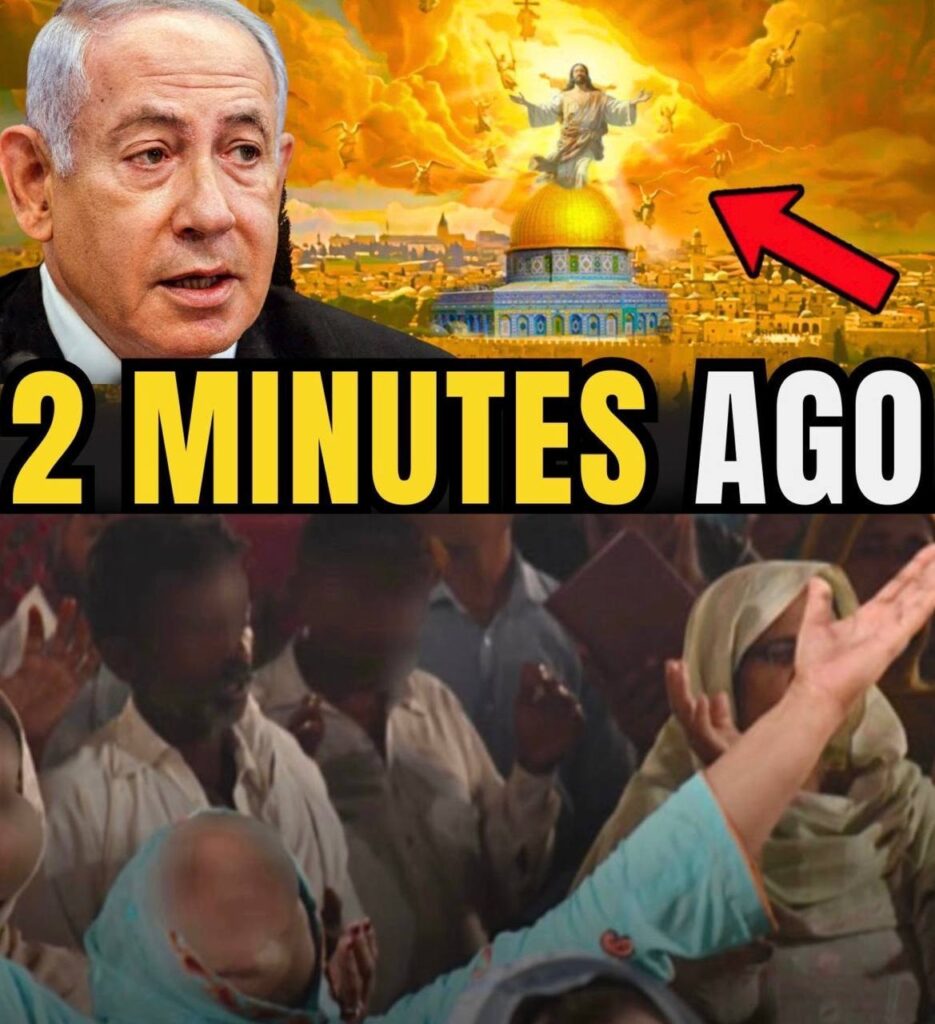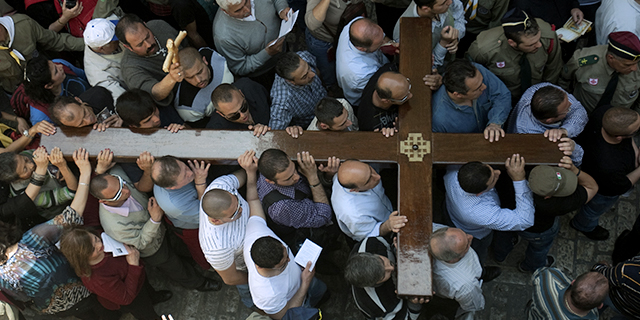Discover the miraculous event in Jerusalem that has Christians around the globe praying. Explore the profound impact and significance of this occurrence.
The Allure of the Extraordinary: Deconstructing “A MIRACLE HAPPENED!”
The initial declaration, “A MIRACLE HAPPENED!” is a powerful, almost primal cry. It taps into humanity’s inherent yearning for the extraordinary, for events that defy the mundane and offer a glimpse beyond the ordinary. The word “miracle” itself carries a hefty weight of religious, spiritual, and even fantastical connotations. It implies an intervention beyond natural laws, a manifestation of divine or supernatural power. It promises hope, wonder, and a break from the humdrum realities of daily life.
This declaration is designed to be immediately impactful. It circumvents rational thought, appealing directly to emotions. It triggers a cascade of questions: What happened? Where? Why now? The simple, declarative nature of the statement creates a sense of urgency and importance, compelling us to pay attention. It’s an invitation to witness something momentous, something that could reshape our understanding of the world.
The strength of this phrase is rooted in its ambiguity. It lacks specific details, allowing individual imaginations to fill in the blanks. For some, it might conjure images of celestial beings, miraculous healings, or divine interventions. For others, it might spark fear of the unknown, suggesting a chaotic disruption of the established order. This flexibility in interpretation makes it a powerful tool for capturing attention and generating widespread interest.

The Power of Prayer: “CHRISTIANS ARE PRAYING:”
The next segment, “CHRISTIANS ARE PRAYING:”, adds a crucial layer of specificity and context. It connects the “miracle” to a particular religious group, shifting the focus from a universal experience to a more targeted narrative. Christianity, with its vast global reach and historical significance, provides a substantial framework for understanding the implications of the statement.
Mentioning Christians specifically frames the miracle within a Christian theological lens. It suggests that this event has particular significance for believers, potentially fulfilling prophecies, confirming faith, or heralding a significant shift in religious history. The act of prayer, in this context, is presented not as a private devotion, but as a collective response to an extraordinary event. It emphasizes unity and a shared experience of awe, fear, or anticipation.
The phrase implicitly invokes the power of prayer as a means of connecting with the divine, reinforcing the religious context and suggesting that believers are seeking guidance, intervention, or protection. However, it’s important to note that while the headline focuses on Christian prayer, it doesn’t exclude the possibility that other faiths and individuals may also be responding to the event in their own ways. The specific mention of Christians, however, is strategically designed to resonate with a large global population, further amplifying the headline’s impact.
This inclusion also introduces the possibility of different interpretations based on varying Christian denominations. Some denominations might emphasize the miraculous nature of the event, while others might approach it with skepticism or a more analytical perspective. The phrase, therefore, is not just an indication of religious engagement, but also an invitation to explore the complexities within the Christian faith itself.
The Significance of Place: “What appeared in JERUSALEM…”
The inclusion of “JERUSALEM” elevates the headline to a whole different level. Jerusalem is not just any city; it’s a location of immense historical, religious, and political significance. For Judaism, Christianity, and Islam, Jerusalem is a holy site, a place where pivotal events of their respective faiths have unfolded. It’s a city imbued with layers of symbolism, spirituality, and political tension.
The fact that this “miracle” supposedly occurred in Jerusalem adds further weight to the claim. It suggests that the event is not merely a local phenomenon, but something of global importance, potentially impacting all three Abrahamic religions. The historical associations, from King David’s reign to Jesus‘s crucifixion to Muhammad’s night journey, lend an air of profound significance.
Jerusalem, as a highly contested and politically volatile city, also introduces the element of potential conflict or social disruption. A religious event of this magnitude occurring in such a sensitive location could exacerbate existing tensions, leading to political unrest, social upheaval, or even violence. The mention of Jerusalem, therefore, not only evokes spirituality but also raises the specter of political and social ramifications.
The choice of Jerusalem as the location is not arbitrary. It’s a deliberate attempt to amplify the sense of importance and urgency, to make the event resonate with a vast audience across different cultures and religious backgrounds. The city serves as a potent symbol, immediately drawing attention and raising the stakes of the unfolding narrative.

The Shadow of Fear: “…scares the whole world”
Finally, the chilling conclusion, “…scares the whole world,” introduces a sense of dread and apprehension. The word “scares” deviates from the initial wonder of the “miracle” and hints at a darker, more ominous undertone. It shifts the narrative from one of pure hope to one tinged with uncertainty and fear.
The assertion that the entire world is frightened suggests that the event in Jerusalem is not just religiously significant but also potentially threatening on a global scale. It implies that whatever has appeared is beyond our control, possibly dangerous, or indicative of a radical shift in the natural order. The fear, in this context, may not be a direct fear of violence, but rather an existential fear of the unknown, of the disruption of established norms, or of a potential cataclysmic event.
This element of fear is crucial. It provides a powerful emotional hook, transforming the narrative from a simple religious event into a global crisis. It suggests that the “miracle” is not necessarily a positive sign, but rather an indication of impending danger. The use of the phrase “whole world” magnifies the sense of scale, portraying the event as a universally impactful phenomenon.
The fear component also underscores the potential for mass hysteria, misinformation, and the manipulation of public opinion. In times of fear and uncertainty, it becomes easier for narratives, even false ones, to gain traction and fuel widespread panic. The headline, therefore, doesn’t just report an event; it also manipulates emotions, creating a sense of urgency and unease.
The Broader Implications and the Call for Critical Thinking
In conclusion, the headline “A MIRACLE HAPPENED! CHRISTIANS ARE PRAYING: What appeared in JERUSALEM scares the whole world” is a masterclass in sensationalism. It skillfully combines religious fervor, historical significance, and the primal fear of the unknown to create a narrative that compels our attention. It’s a testament to the power of language to evoke strong emotions and ignite global discourse.
However, it’s crucial to approach such headlines with a critical and discerning eye. The very sensational nature of the headline, the lack of concrete details, and the manipulation of emotions should raise red flags. Instead of succumbing to knee-jerk reactions, it is essential to:
- Verify the source: Is the source of the information reliable and credible?
- Look for evidence: Does the report provide concrete evidence or just sensational claims?
- Seek multiple perspectives: Check different news outlets and analysis to understand the full context.
- Remain skeptical: Be wary of emotionally charged language and overly dramatic claims.
- Engage in rational discourse: Encourage dialogue and analysis based on reason and evidence rather than fear and speculation.
This headline is a potent example of how language can be used to manipulate public opinion, exploit fears, and promote certain narratives. It reminds us of the importance of critical thinking, media literacy, and the need to engage with information responsibly. In an age of misinformation and sensationalized headlines, the ability to discern truth from fiction is more critical than ever. The “miracle” in Jerusalem, whatever it may be, deserves careful scrutiny, not blind acceptance. It’s a call for us to become active and informed participants in the global conversation, rather than passive recipients of fear-mongering and sensationalized claims. The true miracle may not be in the event itself, but in our ability to approach it with rationality and discernment.

FAQ: A Miracle Happened! Christians Are Praying: What Appeared in Jerusalem Scares the Whole World
Q1: What exactly appeared in Jerusalem that has caused such a reaction?
A1: Reports indicate that a mysterious and inexplicable phenomenon has appeared in Jerusalem, which many are describing as a miraculous sign. Details vary, but the event has sparked significant interest and concern worldwide.
Q2: Why is this event considered a miracle by some Christians?
A2: Many Christians view this event as a miracle due to its timing, location, and the profound spiritual significance Jerusalem holds in Christianity. It is seen as a potential divine sign or message.
Q3: How are people around the world reacting to this appearance?
A3: Reactions are diverse. Some are awe-inspired and consider it a message of hope or warning. Others are skeptical and seek scientific explanations. The event has prompted a surge in prayers and religious gatherings.
Q4: Is there any scientific explanation for what occurred?
A4: As of now, there is no widely accepted scientific explanation for the phenomenon. Researchers and authorities are investigating to determine if there is a natural cause.
Q5: How has this event impacted religious communities?
A5: The event has galvanized many religious communities, leading to increased prayer, discussions on faith, and expectations of prophetic significance. It has also sparked debates about interpretations and the nature of miracles.




